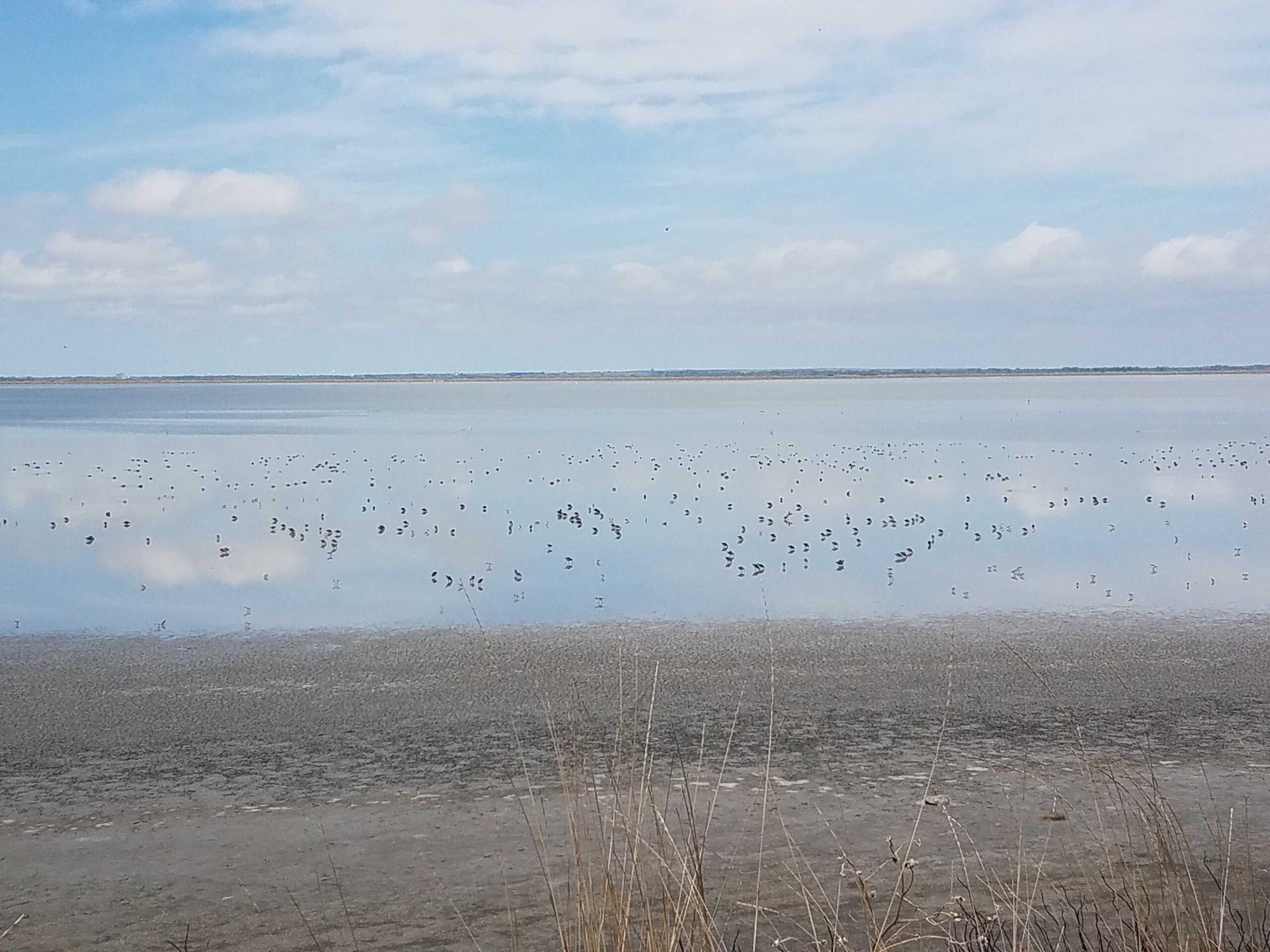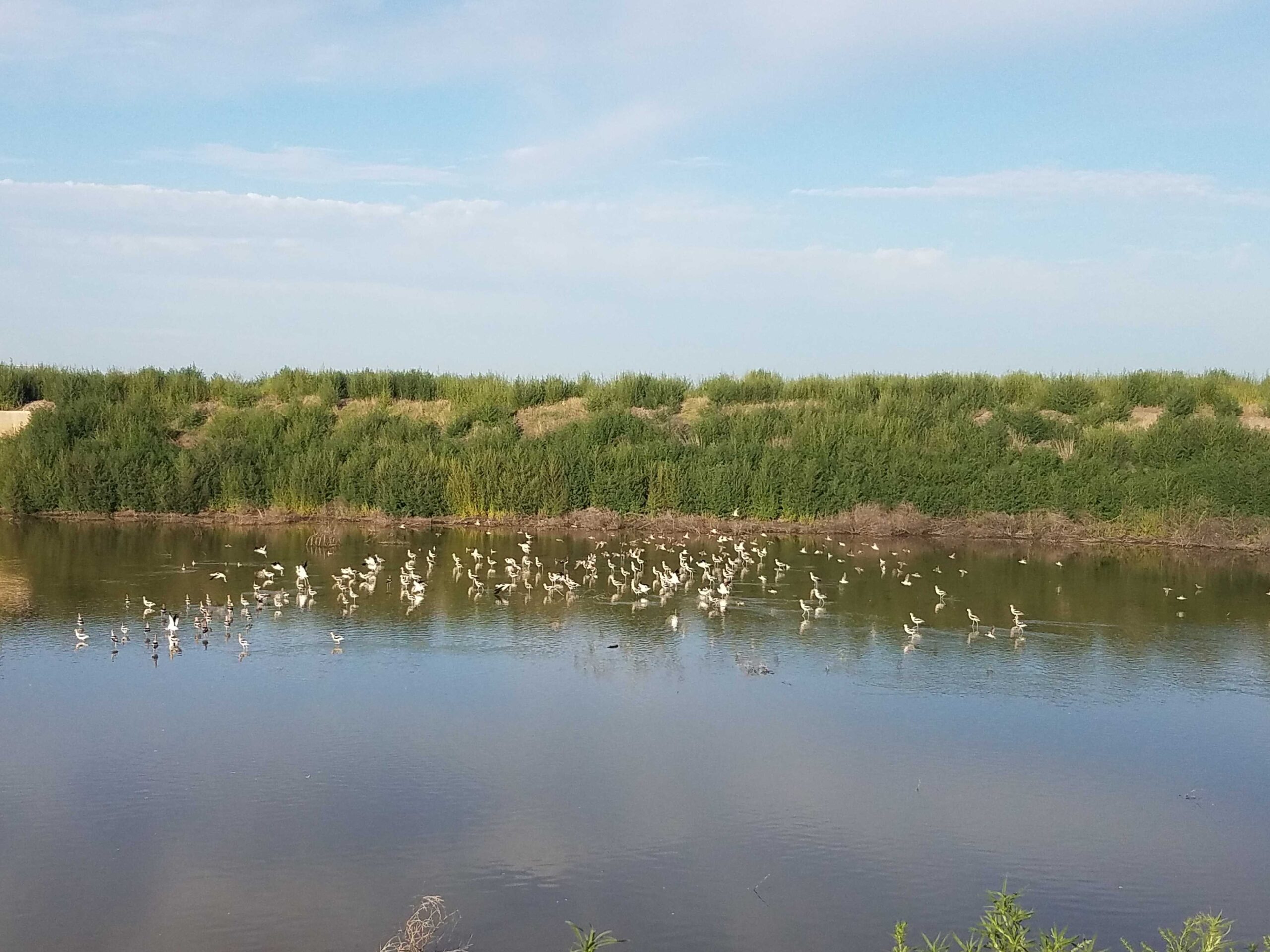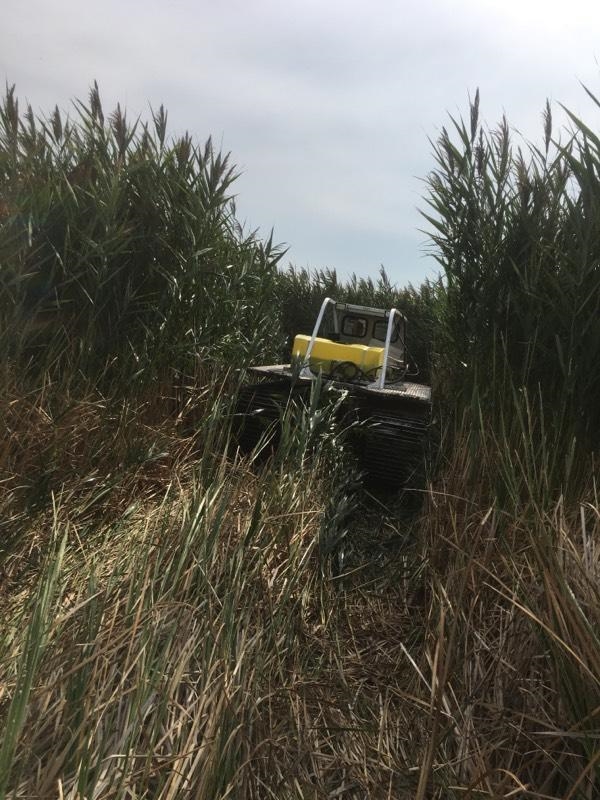There are places in the world that play an outsized role in making sure the environment and wildlife have a chance to thrive and keep a natural balance. These places are so important that were they to vanish, so would the wildlife that depend on them to survive.

Welcome to Cheyenne Bottoms Wildlife Area
Cheyenne Bottoms Wildlife Area is one of those places. Jason Wagner is the public lands manager who oversees and maintains Cheyenne Bottoms. The entire team is just Jason plus two others, but their job carries international significance.
The primary management goal of Cheyenne Bottoms is “to provide a diverse marsh habitat for waterfowl and shorebirds during the migrational periods. This includes providing food, water and resting places. A secondary goal is to increase the production of waterfowl and shorebirds that nest in the area.”
Cheyenne Bottoms is located 11 miles northeast of Great Bend, Kansas, and is internationally important. Forty percent of North America’s shorebirds come through Cheyenne Bottoms, and some, such as the Hudsonian Godwit, stop in Cheyenne Bottoms during their annual migration to and from South America.
“A scientist in Chile put a tracker on a Godwit,” said Wagner, “and five days later it showed up here in Cheyenne Bottoms. It’s amazing to think about.”

Helicopter getting down to spray where wheeled vehicles can’t go
Fighting off the invaders
“We have a problem that requires constant vigilance,” Wagner said. “Phragmites are the problem.”
Phragmites, also known as the common reed, are considered an aquatic nuisance species by the Kansas Department of Wildlife and Parks. They crowd out native plants, can grow over ten feet tall and basically suck up all the surrounding water, drying the landscape.
“Take whooping cranes as an example,” Wagner offered. “Whooping cranes like shallow water, with lower vegetation. Phragmites make the environment uncomfortable for them, they get stressed and leave, which is bad all around.”
There are species of phragmites native to the U.S., but the problem variety came with colonists from Europe.

Those little dots you see are shorebirds resting at Cheyenne Bottoms
“We were able to use a helicopter to spray phragmites, and do some other conservation work thanks to community partners like Pattern Energy,” said Wagner. “Our environmental remediation work started in the mid-1990s, and we appreciate having our partners very much.”

International Destination
“We also are a public resource and recreation area, and we receive visitors from around the globe,” Wagner shared. “People travel here to fish, hunt, hike, camp and enjoy the outdoors we have here. They all know how special Cheyenne Bottoms is, and we’re glad to have them.”
Not only do the hunters enjoy hunting season, but the birds who are hunted know the rules, and act accordingly.

The “Marsh Monster” is used to drive to where the phragmites are
“We don’t allow unrestricted hunting,” said Wagner. “There is always an area that is totally off limits to hunters, and the birds all know where that area is. We don’t want to over stress any one species of bird, and this way they figure out immediately where they are safe, and where no one will hunt them.
“Then you’ll see all the hunters waiting just outside the safe zone, and the birds enjoy their safe space. After sundown, they fly on over to the other areas.”
A Big Job
With a staff of only three, managing 20,000 acres is a big job. The work never ends.
“Sure, it’s a big job, but it’s a job we all love,” Wagner says. “It’s different every day. When I’m outside, which is most of the time, the sights and sounds here are phenomenal. I’m lucky to work in such a special place, and to be able to help ensure it’s here for future generations.”
